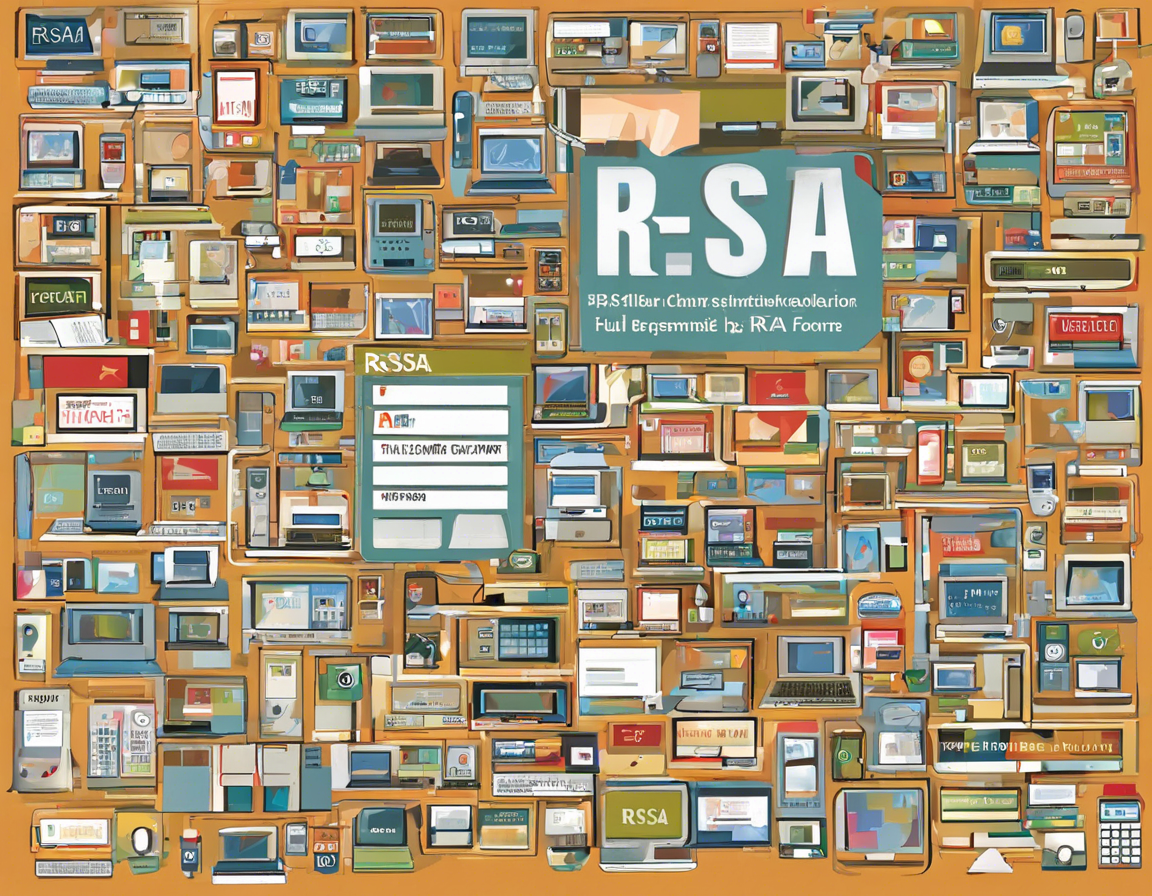Introduction:
RSA algorithm stands for Rivest-Shamir-Adleman, named after the inventors Ron Rivest, Adi Shamir, and Leonard Adleman. It is one of the most widely used encryption algorithms in the world, providing secure communication over insecure channels.
How Does RSA Work?
RSA algorithm revolves around the factoring problem – the difficulty of factoring large integers into their prime factors. The algorithm involves the use of a public key and a private key for encryption and decryption processes. Here’s how it works:
Key Generation:
- Select two large prime numbers, p and q.
- Calculate n = p * q. This forms the modulus for the public and private keys.
- Calculate the totient of n, φ(n) = (p-1)*(q-1).
- Select a public exponent e such that 1 < e < φ(n) and gcd(e, φ(n)) = 1.
- Calculate the private exponent d as the modular multiplicative inverse of e modulo φ(n).
The public key consists of (e, n), while the private key consists of (d, n).
Encryption Process:
- Convert the plaintext message m into an integer.
- Compute the ciphertext c = m^e mod n.
Decryption Process:
- Retrieve the ciphertext c.
- Compute the original message m = c^d mod n.
Security of RSA:
The security of RSA relies on the difficulty of factoring large integers. As of now, there is no efficient algorithm to factorize large numbers with hundreds of digits, thus making RSA a secure encryption method.
Applications of RSA:
RSA algorithm is widely used in various applications, including secure communication, digital signatures, secure transactions, and data encryption.
Frequently Asked Questions (FAQs):
-
Is RSA still secure in today’s world of advanced technology?
Yes, RSA is still considered secure when implemented correctly with sufficiently large key sizes. It is important to regularly update key sizes to adapt to increasing computational power. -
What key sizes are recommended for RSA encryption?
The minimum recommended key size for RSA encryption is 2048 bits. For higher security, key sizes of 3072 bits or even 4096 bits are preferred. -
Can RSA be used for both encryption and digital signatures?
Yes, RSA can be used for both encryption and digital signatures. The public key is used for encryption, while the private key is used for decryption and creating digital signatures. -
Are there any weaknesses in the RSA algorithm?
One potential weakness of RSA is the padding oracle attacks, where attackers exploit the padding used to fill the plaintext to match the block size. -
How does RSA compare to other encryption algorithms like AES?
RSA is often used in combination with symmetric key algorithms like AES. RSA is more computationally intensive, so it is used for key exchange and digital signatures, while AES is used for the actual data encryption. -
Can RSA encryption be cracked with quantum computers?
Quantum computers have the potential to break traditional public-key encryption methods like RSA using algorithms such as Shor’s algorithm. Post-quantum cryptography is being developed to address this threat. -
What is the difference between RSA encryption and RSA digital signatures?
In RSA encryption, the sender encrypts a message using the recipient’s public key, while in RSA digital signatures, the sender signs a message using their private key for validation by others using the sender’s public key. -
Are there any alternatives to RSA for encryption?
Yes, there are alternatives to RSA such as Elliptic Curve Cryptography (ECC), which offers similar security with shorter key lengths, making it more computationally efficient. -
Can RSA algorithm be used for secure online transactions?
Yes, RSA is commonly used for securing online transactions, ensuring that sensitive information such as credit card details are transmitted securely over the internet. -
How does RSA encryption ensure data confidentiality?
RSA encryption ensures data confidentiality by using the recipient’s public key to encrypt the data, which can only be decrypted by the recipient using their private key, thus keeping the data secure during transmission.
